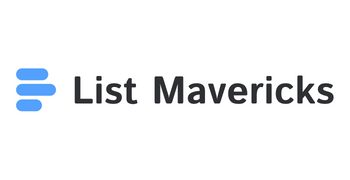Outbound marketing and sales involve reaching out to potential customers directly rather than waiting for them to make the first move. Companies use methods like cold calling, emailing, and advertising to start conversations with people who may not know about their products or services yet. This proactive approach lets businesses target specific audiences and increase their chances of creating new opportunities.
The key to outbound marketing is understanding who the target customers are and choosing the right channels to reach them. With careful planning and well-crafted messages, businesses can build interest, start sales conversations, and drive growth. Learning proven strategies helps sales teams maximize their impact and avoid wasting time or resources. Find out what works best, how to measure results, and which trends are shaping outbound success by reading further.
Key Takeaways
- Outbound marketing and sales focus on reaching out to potential customers first.
- Using the right channels and strategies is important for strong results.
- Measuring performance helps teams improve outbound sales.
Fundamentals of Outbound Marketing & Sales

Outbound marketing and sales use direct outreach to generate leads and drive business growth. Both target specific audiences and rely on personal or mass communication, but they each use slightly different approaches and tools.
What Is Outbound Marketing?
Outbound marketing is a marketing strategy where businesses reach out to potential customers, rather than waiting for them to make the first contact. This approach often uses methods like cold calls, direct mail, television or radio ads, and print media.
A key feature is that outbound marketing delivers its message to a wide audience, even if not everyone is interested. This can be helpful for brand awareness or introducing new products. While some see it as less targeted, modern outbound marketing can use data to focus on certain groups, improving efficiency.
Some common outbound marketing strategies include:
- Cold calling potential customers
- Mass emails or direct messages
- TV, radio, or print advertisements
Outbound marketing can help businesses quickly reach many people and start new relationships. Learn more about these methods and how they work in business at the Salesforce outbound marketing guide.
What Is Outbound Sales?
Outbound sales takes a more direct approach than outbound marketing. The sales team identifies potential customers and contacts them through calls, emails, or social platforms. Their goal is to start a conversation, explain their offer, and move leads through the sales process.
Typical outbound sales tactics include:
- Cold calling and follow-up calls
- Personalized emails
- Connecting with leads on LinkedIn or similar networks
Outbound sales focuses on building relationships and closing deals. It is proactive, as sales representatives do not wait for leads to express interest. Instead, they reach out first and tailor their pitch to the needs of each prospect. Companies that use outbound sales must have clear target profiles and well-prepared messaging. For more details, see this comprehensive guide on outbound sales.
Outbound vs. Inbound Marketing
Inbound marketing is different from outbound marketing because it draws in customers who are already searching for information, products, or services. Common tactics include blog posts, social media updates, search engine optimization, and helpful guides.
Comparison Table:
| Aspect | Outbound Marketing/Sales | Inbound Marketing/Sales |
|---|---|---|
| Approach | Reaches out to audience | Attracts audience |
| Main Channels | Calls, ads, direct mail, emails | Content, SEO, social media |
| Target Audience | Broad or segmented | Interested or self-identified |
| Goal | Drive awareness & start relationships | Nurture interest & build trust |
Outbound marketing and sales focus on proactive engagement, while inbound relies on attracting leads naturally. Used together, these strategies can support each other and improve results. For more info, see this comparison of inbound vs. outbound marketing.
Key Outbound Marketing Channels

Outbound marketing uses different channels to connect businesses with potential buyers who may not have heard of their products or services. These channels are often proactive and can be tailored for both digital and traditional outreach to achieve specific campaign goals.
Cold Calling and Telephone Outreach
Cold calling remains a direct way for sales teams to reach new prospects. Salespeople use the phone to introduce products, answer questions, and set meetings or demos. While often seen as old-fashioned, it is still common in industries like business services, real estate, and finance.
Cold outreach by phone works best with clear scripts, research about the prospect, and a polite, professional approach. Companies usually train their staff to handle objections and manage call follow-ups. Many use customer relationship management (CRM) tools to track calls and results.
Telephone outreach can help gather instant feedback, qualify leads, and build a first connection quickly. Although some people may not answer unknown numbers, persistence and respectful calling times can improve response rates. Cold calling is often used alongside other outbound marketing tactics for better coverage.
Best Practices
- Prepare a brief call script
- Personalize the introduction
- Respect call times, avoiding early morning or late night
- Record notes for future follow-up
Direct Mail Campaigns
Direct mail remains an effective option for reaching decision-makers who might ignore digital ads or email. Companies send letters, brochures, or postcards directly to a person’s mailbox. These materials can highlight promotions, announce new products, or invite attendance to special events.
A key advantage of direct mail is tangibility—recipients must physically handle the item, increasing the chance of their attention. Message targeting, creative design, and quality materials make a difference in response rates. Many campaigns use custom offers and clear calls to action, such as QR codes or unique URLs for tracking.
For B2B outreach, direct mail is useful when trying to reach roles that filter email or rely on executive assistants. Costs can be higher than digital methods but often deliver strong results in certain industries. Planning, clear goals, and measuring responses are important for success, as explained in this outbound marketing guide.
Types of Direct Mail
- Postcards
- Letters
- Brochures
- Catalogs
Email Marketing for Outbound
Email marketing is a core channel for outbound sales and lead generation. Sales teams send personalized or bulk emails to potential clients who have not interacted with their company before—a process known as cold email outreach.
A strong subject line, direct message, and a clear call to action increase the chances of a response. Tools for email tracking help measure open rates, clicks, and replies. Segmenting email lists allows for more targeted outreach, improving relevance for each recipient.
Many businesses automate email campaigns, saving time and allowing for timely follow-ups. Companies must follow regulations and best practices to avoid spam filters and maintain good sender reputations. For best results, messaging should be professional, relevant, and respectful of the recipient’s time, as shown in these effective outbound marketing strategies.
Tips for Effective Email Outreach
- Personalize each email
- Avoid spammy wording
- Follow up after initial outreach
- Provide value, not just a sales pitch
Digital and Traditional Advertising
Digital advertising like paid search ads, display banners, or social media ads lets companies target users with specific interests, locations, or behaviors. These outbound marketing campaigns can drive traffic, raise brand awareness, or generate leads through sponsored content, video ads, or remarketing.
Platforms such as Google Ads, Facebook Ads, and LinkedIn Ads offer detailed audience targeting and real-time performance data. This makes digital advertising flexible and easy to measure.
Traditional advertising includes TV commercials, radio ads, print ads, and billboards. These channels reach broader audiences and are especially effective for local markets or mass brand campaigns. Traditional ads can be more expensive and harder to track than digital options, as noted by Salesforce’s guide to outbound marketing, but they remain important for some industries and goals.
| Channel | Digital Advertising | Traditional Advertising |
|---|---|---|
| Examples | Social media, search, banners | TV, radio, print, billboards |
| Targeting | Advanced (by audience data) | Broad (by region, publication) |
| Tracking | Clicks, impressions, conversions | Reach estimates, surveys |
| Cost Structure | Pay per click/impression | Flat rates, production fees |
Effective Outbound Sales Strategies

Successful outbound sales depend on finding the right leads, sending targeted messages, and making personal connections. Each method has steps and best practices that help sales teams reach quality prospects and turn them into customers.
Sales Prospecting Techniques
Sales prospecting is the first step in any outbound sales strategy. It involves identifying and reaching out to businesses or people likely to need a product or service. Sales teams use tools like LinkedIn, business directories, and networking events to find qualified leads.
Key techniques include:
- Building ideal customer profiles to focus efforts
- Using referral marketing to leverage existing relationships
- Researching prospects’ needs and decision makers before outreach
B2B sales teams often combine data analysis and manual research to keep their lead lists up to date. They set measurable goals for prospecting activity, like the number of calls or emails sent each day. Effective prospecting fills the sales pipeline and allows for better follow-ups, which is critical to increasing win rates. Learn more about building a solid prospecting process from Outreach’s guide on outbound sales.
Cold Email Outreach
Cold emailing is a common way to introduce products and services to new prospects. The best cold emails are brief, personalized, and focused on the value for the receiver.
Steps to improve cold email success:
- Personalize the message—use the prospect’s name and mention something specific about their business
- Clearly state the value proposition—why should they care?
- Include a clear call to action—set up a meeting or request a reply
- Use follow-ups to stay top-of-mind
Sales teams track metrics like open rates and reply rates to measure effectiveness. Avoid spamming by sending targeted messages and always provide an opt-out option. These practices help cold emailing remain effective for B2B lead generation, as shown in this outbound sales strategies article.
Social Selling
Social selling leverages social media platforms to build relationships with potential buyers. It’s more than just connecting; it’s about sharing insights, engaging with content, and starting meaningful conversations.
Effective social sellers:
- Monitor industry trends to share relevant content
- Engage with prospects’ posts to show genuine interest
- Send personalized messages rather than generic pitches
Social selling works best when combined with other outbound strategies like cold emailing and prospecting. LinkedIn is especially useful in B2B sales for finding decision makers and nurturing leads over time. By being active and adding value, sales professionals can increase trust and build long-term relationships, which supports overall lead generation efforts. For specific approaches, see key practices in Artisan’s guide to outbound sales strategies.
Optimizing the Outbound Sales Process

Effective outbound sales depend on targeting the right leads, managing the flow of prospects, personalizing communication, and automating tasks. These methods help sales teams increase conversion rates and work more efficiently.
Lead Qualification and Nurturing
Lead qualification is about identifying prospects who fit the company’s ideal customer profiles (ICPs) and are likely to become buyers. Sales teams use clear criteria such as company size, industry, and budget to focus their efforts on high-value prospects.
Typical steps to qualify leads:
- Define buyer persona and ICP.
- Score leads based on actions like downloads or replies.
- Disqualify poor fits early.
Nurturing is important for moving leads through the sales process. Teams send follow-up emails, offer useful info, and answer questions. The goal is to keep qualified leads engaged until they are ready to make a decision.
Building and Managing the Sales Pipeline
A healthy sales pipeline lets teams see where leads are in the buying journey and forecast revenues more accurately. Pipeline management involves moving leads smoothly from initial contact to closing.
Key actions in pipeline management:
- Use a CRM to track every lead and interaction.
- Prioritize leads who match the ICP and show buying signals.
- Regularly clean out cold or unresponsive leads.
Teams should hold weekly reviews to spot bottlenecks and adjust tactics. This helps ensure high-value prospects are moving forward in the sales process. Using CRM data makes it easier to update records, spot trends, and plan next steps. For more on pipeline strategy, see this outbound sales guide.
Personalization and Messaging
Personalized messaging makes sales outreach stand out. It starts with research into the prospect’s business, role, and pain points. Personalized emails often use the prospect’s name, mention industry trends, or offer ideas tailored to their needs.
Examples of effective personalization:
- Referencing a recent company announcement.
- Addressing a specific challenge the prospect faces.
- Customizing the subject line to boost email open rates.
Salespeople can use templates but should always adjust details for each message. Tailored content helps build trust and improves response rates. For more tips, check out these outbound sales strategies.
Sales Automation and Tools
Sales automation lets teams handle more tasks with less manual effort. Common tools include customer relationship management (CRM) systems, email automation, and lead scoring platforms.
Automation can:
- Send follow-up emails on a set schedule.
- Log calls and emails inside the CRM.
- Assign leads based on rules like geography or deal size.
Using sales automation saves time and reduces errors. Teams can focus on building relationships instead of chasing routine tasks. Adopting the right mix of automation and human touch helps scale outbound sales and improve results. More insights on choosing the best sales automation tools are available online.
Measuring and Improving Outbound Campaign Performance

Accurate tracking of campaign results is key for successful outbound marketing and sales. A focus on the right metrics, support from data-driven testing, and ongoing adjustments can lead to more leads and higher sales.
Key Performance Indicators for Outbound
Outbound campaigns are judged using several key performance indicators (KPIs). The most common KPIs include:
- Open rates: The percentage of emails or messages that contacts open.
- Response rates: The percentage of recipients who reply to or engage with a message.
- Conversion rates: The ratio of prospects who take the desired action, such as booking a meeting or making a purchase.
Sales growth and customer engagement also matter. Measuring the return on investment (ROI) shows if the money spent on campaigns brings in more revenue. Testimonials and case studies can support quantitative results by showing how campaigns have improved real customer outcomes. For more on top KPIs, see this detailed guide on outbound sales KPIs.
A/B Testing and Data Analysis
A/B testing helps teams compare different messages or offers to see what gets better results. For example, they might send two subject lines to see which gains more opens. This process removes guesswork and guides teams to use messages that work best.
Data analysis plays a vital role by finding trends and patterns in campaign results. Teams can see which channels drive the highest engagement or where drop-offs occur in the sales funnel. Analyzing metrics like open rates and response rates helps tweak campaigns for better performance. Tracking measurable results over time lets teams make smart changes instead of random adjustments. Explore more about optimization with data-driven outbound sales strategies.
Maximizing Conversion Rates and ROI
To boost conversion rates, teams must focus on timely follow-ups, clear messaging, and personalized outreach. Consistency in reaching out ensures that leads do not slip through the cracks. Adjusting campaigns based on data and feedback helps improve the likelihood of prospects taking action.
Tracking ROI means carefully comparing campaign costs with sales or leads generated. This is often shown in a simple table:
| Campaign Spend | Leads Gained | Sales Made | ROI (%) |
|---|---|---|---|
| $2,000 | 100 | 10 | 400 |
Using testimonials and case studies in outreach can build trust and nudge hesitant leads toward conversion. Teams that monitor these metrics closely are more likely to see measurable, sustained improvements over time. Review best practices for campaign tracking in this in-depth outbound measurement article.
Trends, Challenges, and Best Practices in Outbound

Outbound marketing and sales continue to evolve as new technology, data privacy laws, and buyer behaviors shape strategies. Companies are balancing proven tactics with modern innovations to generate new leads, improve brand awareness, and deliver better customer experiences.
Overcoming Common Outbound Obstacles
Outbound marketing can be expensive and difficult to track. High costs from TV, print, and direct mail often limit reach for small businesses. Companies are now optimizing budgets by focusing on the most effective channels, like targeted email and cold calling, instead of broad approaches.
Another obstacle is short audience attention spans. Outbound messages may be ignored or marked as spam. Clear messaging and personalization help catch attention. Teams need to invest in proper training, use outreach schedules that respect time zones, and follow up promptly to keep prospects interested.
A careful balance is needed: too much persistence may harm brand reputation, but too little can hurt marketing goals. Tracking metrics like response rates, lead quality, and sales cycles helps marketers refine their approach. This data-driven focus makes outbound campaigns more efficient and effective. Find more tips in The Ultimate Outbound Marketing Guide.
Legal Considerations and Compliance
Regulations are a major part of modern outbound marketing. Laws like the Telephone Consumer Protection Act (TCPA) control how companies can contact people by phone or text. Violating these rules can result in large fines and legal problems.
Data privacy laws require companies to get clear consent before collecting or using any customer data for marketing. Teams must document user permissions and keep good records, especially when reaching out by email or phone in different countries. Marketing teams should regularly train staff on these laws to reduce risks and protect the company’s reputation.
Compliance is critical for both customer trust and legal safety. Following best practices, such as honoring “do not call” lists and offering easy opt-out options for emails, shows respect for recipients. Accuracy in documenting consent is crucial for demonstrating compliance during any audit or legal review. Learn more about these practices at Outbound Marketing Trends.
Integrating Outbound and Inbound for Success
Combining outbound marketing with inbound strategies can create strong results. Outbound can quickly increase brand awareness and generate leads, while inbound attracts interested buyers with helpful content. The key is to create a smooth journey from first contact to sale.
For example, outbound efforts like cold emails or direct mail introduce the company, and strong inbound content—such as blog posts or webinars—keeps prospects engaged. Companies should use CRM systems to track all interactions and adjust outreach based on buyer behavior.
Aligning sales and marketing teams ensures that both outbound and inbound efforts support each other. Sharing feedback and using the same marketing goals improve customer experience and shorten sales cycles. This approach provides multiple touchpoints, making it easier to move leads through the funnel. More details are available in B2B Outbound Marketing.
Innovative Outbound Campaign Examples
Businesses are using unique outbound techniques to stand out. Hyper-personalization is popular: teams use data to tailor messages to each recipient’s needs and interests. For example, targeted emails can reference industry trends, previous company interactions, or specific pain points.
Interactive campaigns, like sending customized video messages or hosting live Q&A webinars, are also making outbound more engaging. Some companies use direct mail kits that include small branded gifts, which combine physical and digital touchpoints for higher response rates.
Examples of outbound marketing:
- Cold calling decision-makers about new solutions
- Sending direct mail with QR codes leading to special offers
- Running digital ads to encourage sign-ups for a free trial
Innovative outbound campaigns focus on relevance, timing, and customer experience. Teams who test and refine their strategies often see better engagement and more qualified leads. See more about outbound marketing strategies.
Frequently Asked Questions

Outbound marketing and sales focus on reaching new customers through direct methods such as calls, ads, and targeted campaigns. These practices depend on proven strategies, measurable goals, and the right blend of skills.
How can outbound marketing strategies effectively generate leads?
Outbound marketing uses advertising, cold calling, events, and direct mail to reach a wide audience. Teams often segment prospects and tailor messages to different groups for better results. Success is more likely when they personalize outreach and follow up consistently across channels like email and phone.
What are the key components of an outbound sales campaign?
A strong outbound sales campaign includes a clear target audience, compelling messaging, and a defined sales process. Campaigns use tools like email templates, calling scripts, and contact databases. Regular tracking and adjustments, based on response rates and feedback, help maximize lead generation and conversions.
What distinguishes outbound marketing from inbound marketing?
Outbound marketing pushes messages to potential customers using methods like cold calls, TV ads, and paid promotions. Inbound marketing, in contrast, attracts customers who are already interested, often through content, websites, and search engines. Outbound focuses on reach and frequency, while inbound relies on drawing attention organically, as explained in this guide.
How can one measure the success of an outbound marketing campaign?
Success can be measured using key metrics such as response rates, conversion rates, number of meetings booked, and sales closed. Teams may also track cost per lead and return on investment. Reviewing these metrics over time helps improve future campaigns and identify what’s working best.
What are the best practices for integrating outbound and inbound marketing efforts?
Combining outbound and inbound involves sharing data and aligning messages across all channels. Teams can follow up on inbound leads with outbound calls or emails, and use inbound content to support outbound outreach. Coordinated efforts increase brand recognition and make it easier to nurture prospects throughout the sales process.
What skills are essential for a successful career in outbound sales?
Effective outbound sales professionals need strong communication, resilience, and the ability to handle rejection. Organization and time management are also important. Familiarity with sales tools, scripts, and customer relationship management software helps improve performance and track results.

